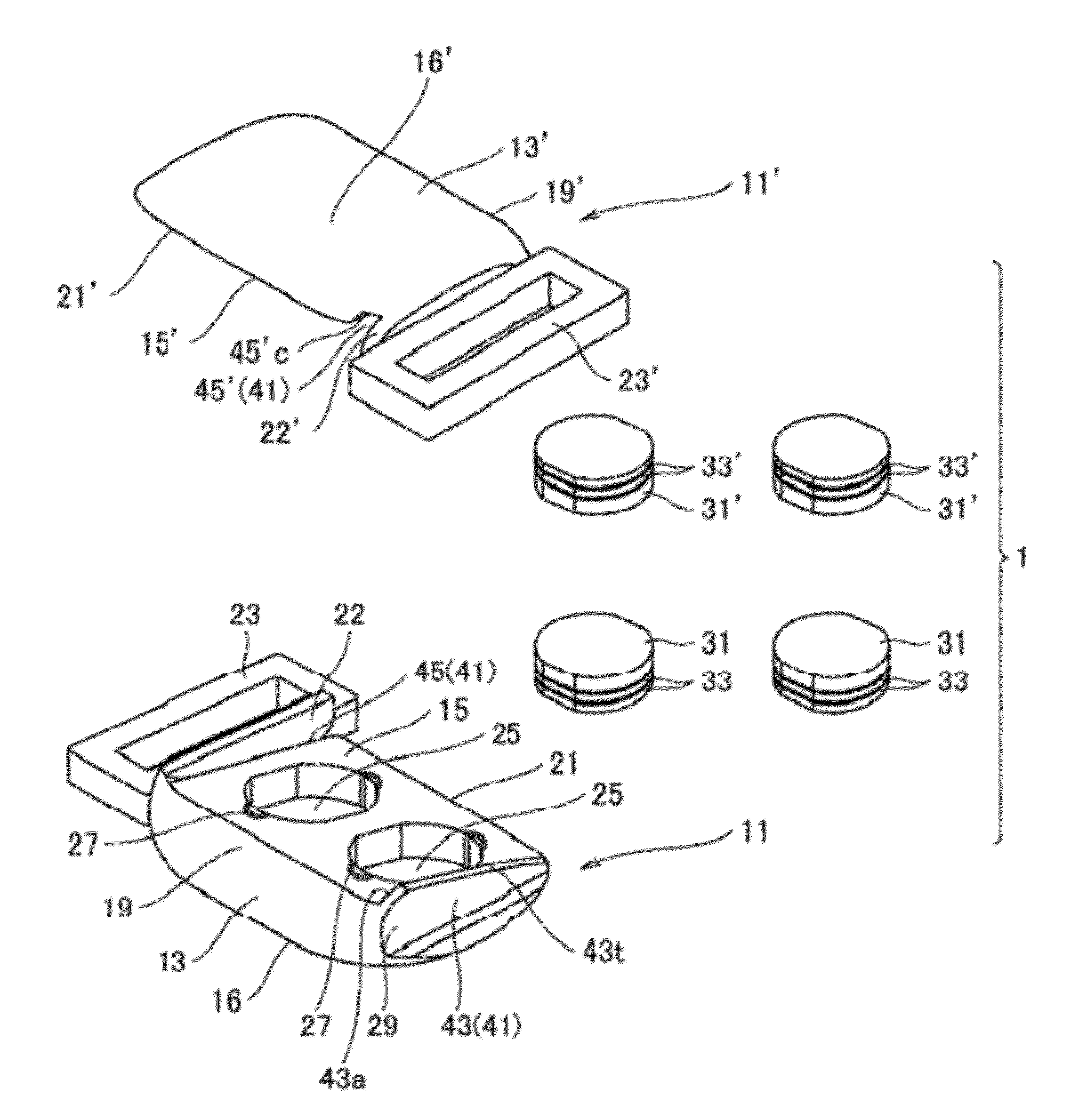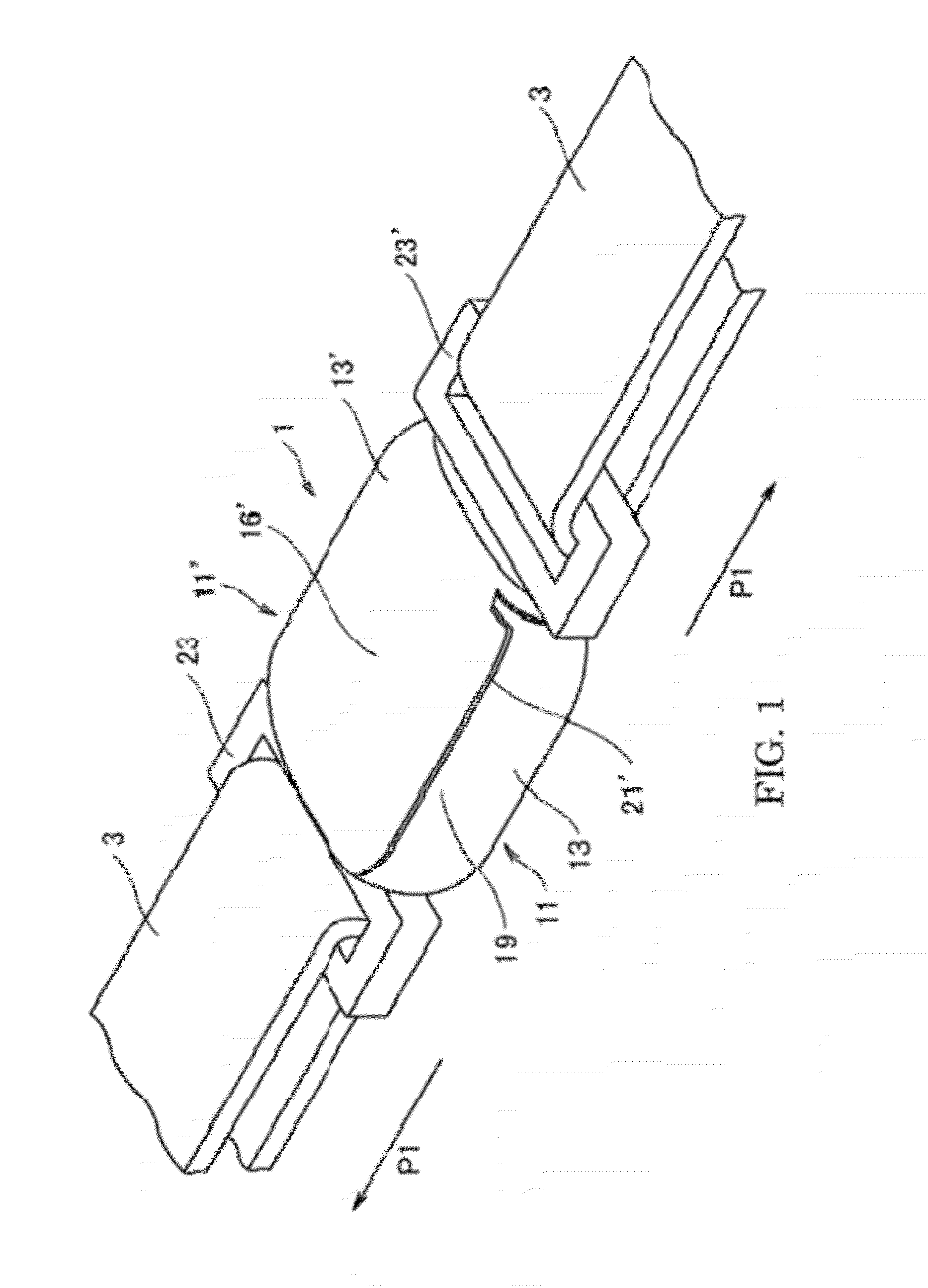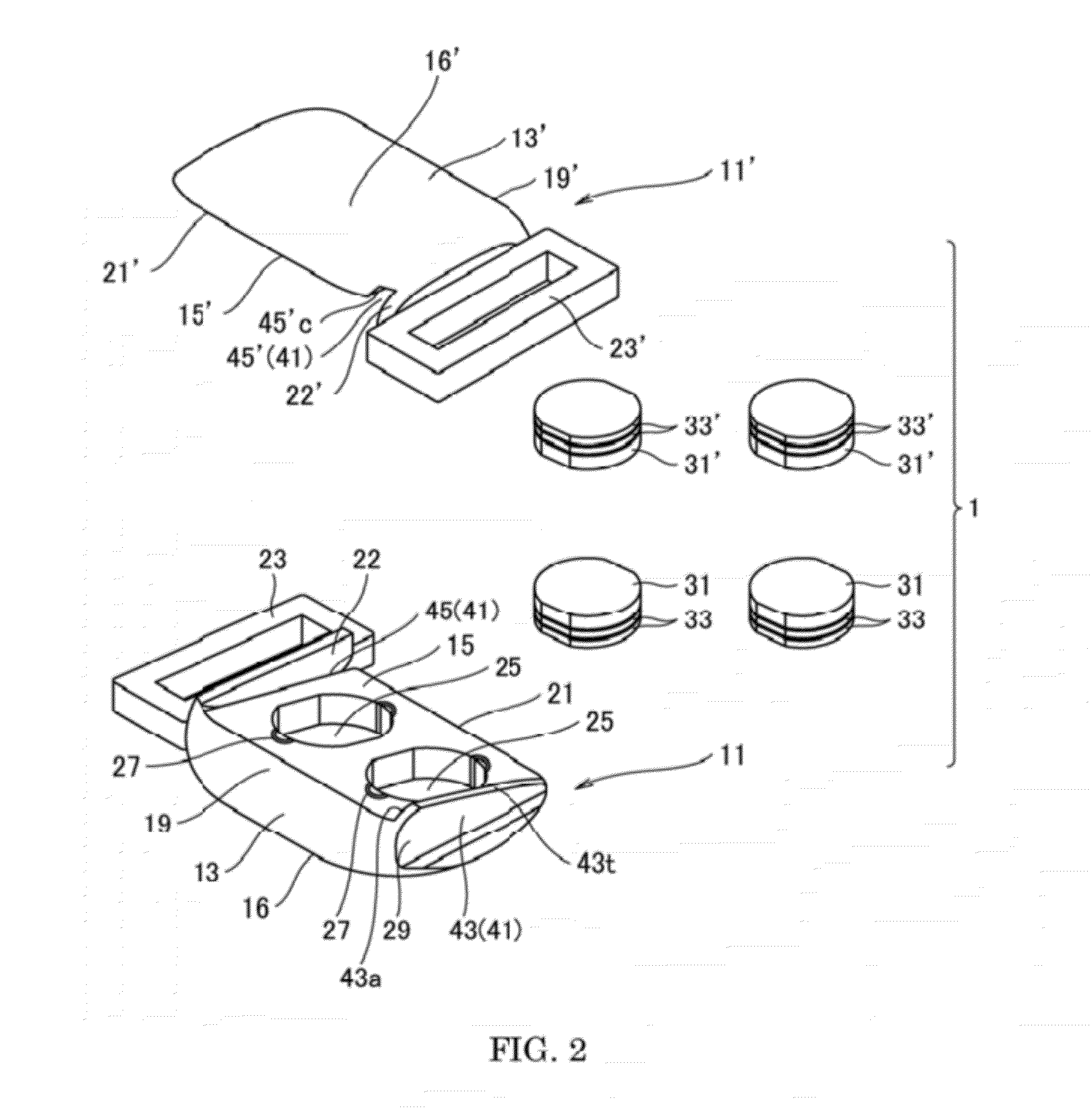Magnetic Connector
a technology of magnetic connectors and magnets, applied in the direction of permanent magnets, magnetic bodies, magnetic materials, etc., can solve the problems of significant inconvenience, difficult to separate the magnets with the fingers of both hands, and difficult to pick the same with thumb and index finger, so as to achieve the effect of preventing easy separation in the pulling direction
- Summary
- Abstract
- Description
- Claims
- Application Information
AI Technical Summary
Benefits of technology
Problems solved by technology
Method used
Image
Examples
first modified example
of this Embodiment
[0065]A first modified example of this embodiment is described with reference to FIGS. 9 to 13. In a coupling device 51 according to the first modified example, the connection is released or the release of the connection is assisted by the basically same principle as that of the coupling device 1 described above. Herein, a member different from that of the coupling device 1 is described and the same member name as that used in the coupling device 1 is used in the coupling device 51 for the common member and the description thereof is omitted as far as possible (the same applies to following modified examples).
[0066]That is to say, a coupling piece 52 according to the coupling device 51 is provided with a coupling piece main body 53 and an attaching piece 54 and the coupling piece main body 53 is provided with a joint surface 55 (refer to FIG. 11). A magnet piece 65 is embedded in an embedded hole 63 provided on the joint surface 55. A slide projected piece 67, whic...
second modified example
of this Embodiment
[0069]A second modified example of this embodiment is described with reference to FIGS. 14 to 18. A coupling device 51A according to the second modified example, is basically provided with the same structure as the structure of the coupling device 51, and difference therebetween is the slide guide structure of them. Therefore, the same reference sign is assigned to the member common to both and the description thereof is omitted. Hereinafter, the slide guide structure is described.
[0070]A slide guide structure 66A of the coupling device 51A is composed of a slide projected piece 67A (slide projected piece 67A′) and a slide groove 68A′ (slide groove 68A). The slide projected piece 67A is formed into a triangular shape in cross section, which inclines upward from one end in the pulling direction inward and vertically drops from an apex (refer to FIG. 18), so that the slide groove 68A′, which receives the same, also is formed into a triangular shape in cross section. ...
third modified example
of this Embodiment
[0072]A third modified example of this embodiment is described with reference to FIGS. 20 to 23. A coupling device 51B according to the third modified example is basically provided with the same structure as the structure of the coupling device 51A, and they are different from each other with respect to the slide guide structure and a fixing structure of the magnet of them. Therefore, the same reference sign is assigned to the member common to both and the description thereof is omitted. Hereinafter, the slide guide structure and the fixing structure are described.
[0073]Concave portions 67Bp and 68Bp being in egg-shapes, in a planar view are formed on a slide projected piece 67B and a slide groove 68B, which composes a slide guide structure 66B. As illustrated in FIG. 21, both of the concave portions 67Bp and 68Bp open upward and are laterally communicated with an embedded hole 67Bh. Two fixing claws 67Bk and 68Bk stand between the concave portions 67Bp and 68Bp an...
PUM
| Property | Measurement | Unit |
|---|---|---|
| magnetic | aaaaa | aaaaa |
| pulling force | aaaaa | aaaaa |
| magnetic force | aaaaa | aaaaa |
Abstract
Description
Claims
Application Information
 Login to View More
Login to View More - R&D
- Intellectual Property
- Life Sciences
- Materials
- Tech Scout
- Unparalleled Data Quality
- Higher Quality Content
- 60% Fewer Hallucinations
Browse by: Latest US Patents, China's latest patents, Technical Efficacy Thesaurus, Application Domain, Technology Topic, Popular Technical Reports.
© 2025 PatSnap. All rights reserved.Legal|Privacy policy|Modern Slavery Act Transparency Statement|Sitemap|About US| Contact US: help@patsnap.com



